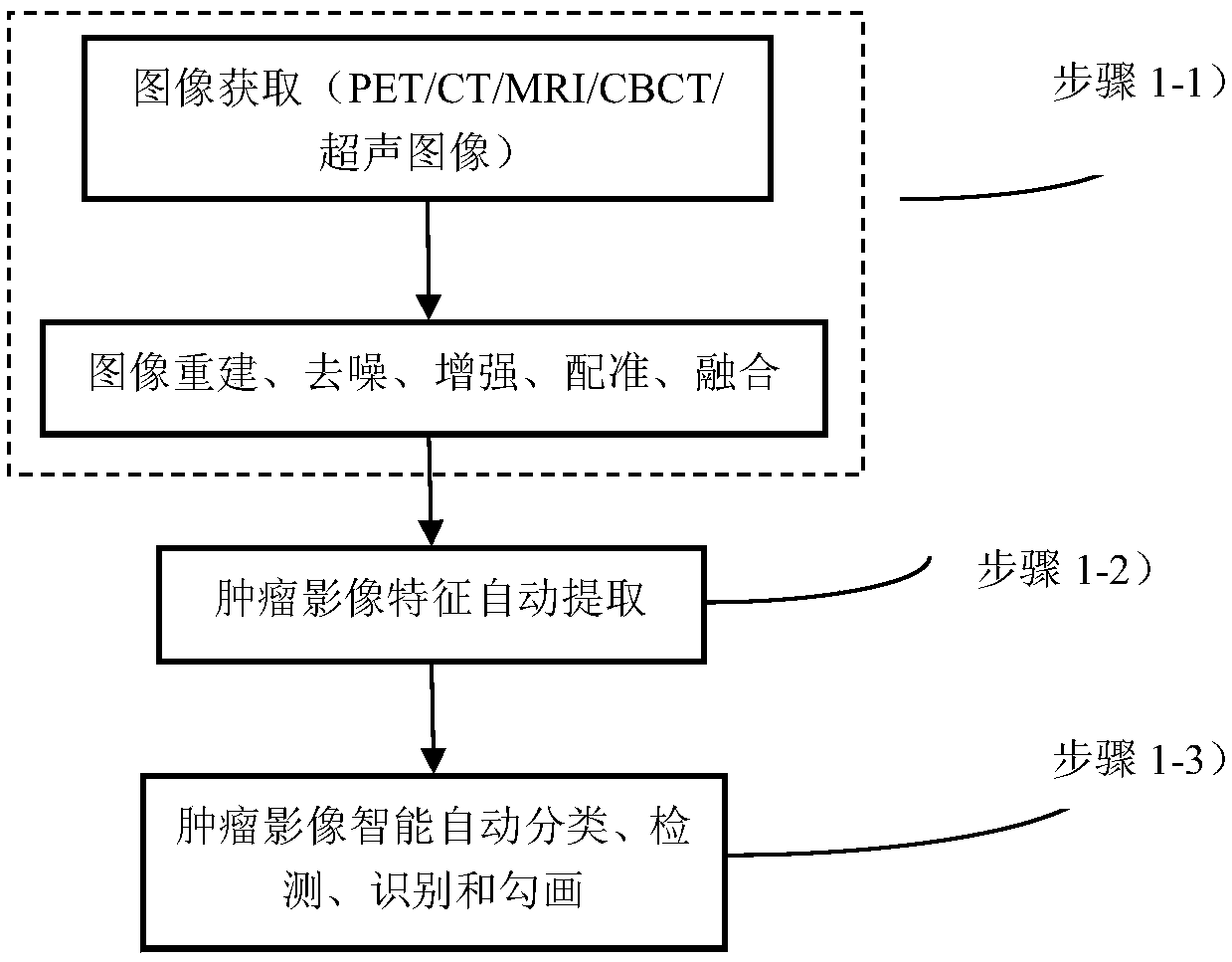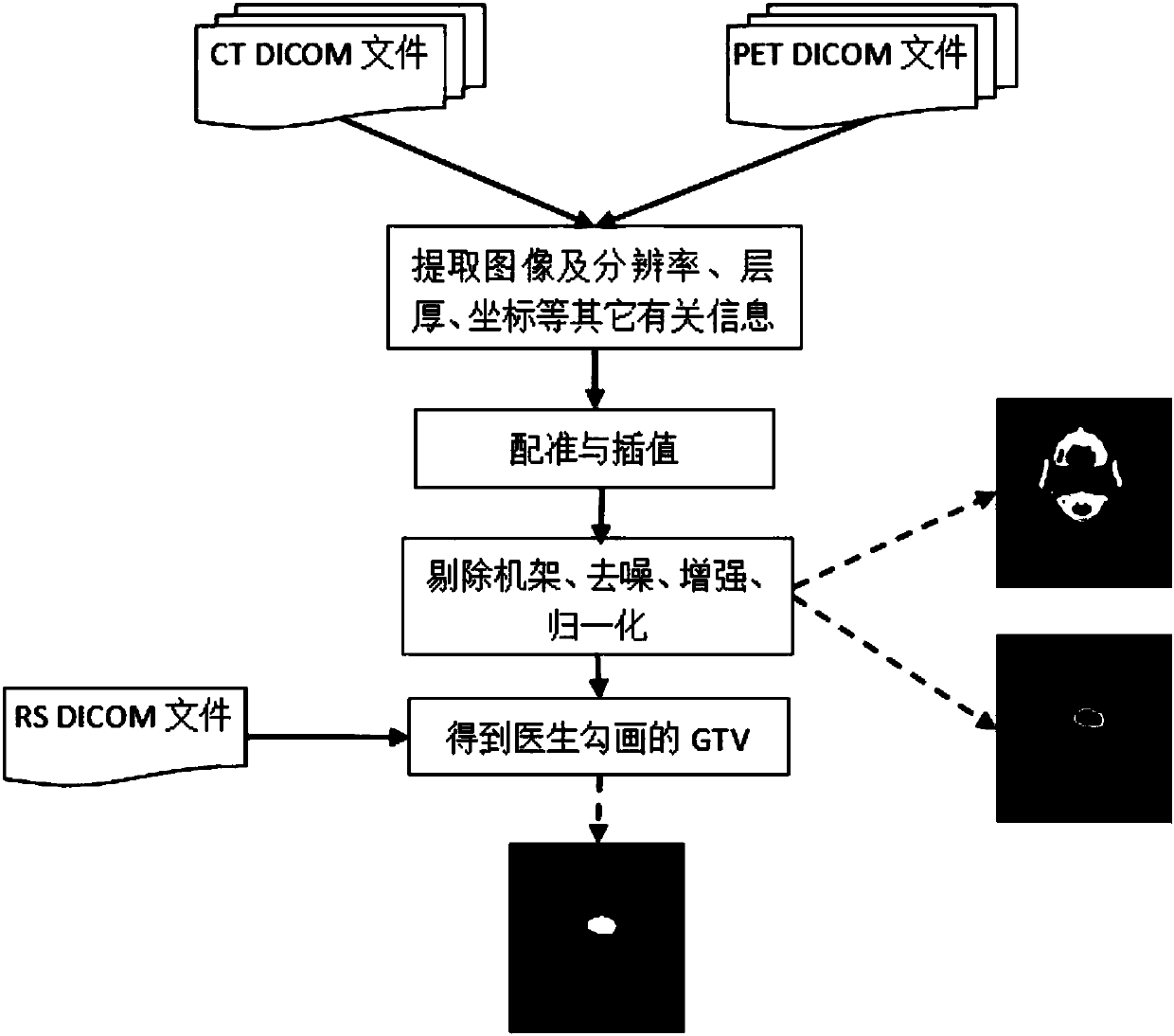Intelligent and automatic delineation method for gross tumor volume and organs at risk
A tumor radiation and treatment target technology, applied in the field of biomedical engineering, can solve the problems of strong subjectivity, affecting the accuracy of radiation treatment planning, treatment efficacy, and poor precision
- Summary
- Abstract
- Description
- Claims
- Application Information
AI Technical Summary
Problems solved by technology
Method used
Image
Examples
Embodiment 1
[0068] This embodiment shows an image preprocessing method, including image acquisition and preprocessing of the acquired graphics:
[0069] Image acquisition includes acquiring images of two parts: (a) PET / CT, PET / MRI, MRI, CT and other images for tumor diagnosis, and radiotherapy simulation positioning CT (SCT) for making treatment plans. These images are commercially imaged by the hospital Equipment imaging is obtained through the DICOM file exported by the PACS system in the hospital clinic, and the DICOM file also provides scanning parameter information. (b) Onboard cone-beam CT (CBCT), MRI, or ultrasound-guided images for radiotherapy guidance.
[0070] The image information of various modalities is preprocessed, and SCT is used as a reference image to register and interpolate the images of each modality into images with the same spatial resolution as SCT. Specifically, tumor PET / CT / MRI medical imaging systems have different imaging principles and characteristics, and p...
Embodiment 2
[0076] This example shows a random walk tumor delineation method integrating an adaptive regression kernel:
[0077] The traditional random walk method only considers the gray information of the image, and uses the edge weight function of the undirected graph to represent the similarity between adjacent pixels in space, without considering the neighborhood information of the pixel; while the PET image of the tumor It has obvious anisotropy characteristics, mainly manifested in the uneven distribution of SUV values in the tumor area; in PET images, the SUV (Standard Uptake Value) value is affected by the intensity of tissue metabolism, and the more active the metabolism, the higher the corresponding SUV value; The metabolism of normal brain tissue around head and neck tumors is also active, and its SUV value distribution is close to that of the tumor area, and the edge weight function is close to 1. At this time, the random walk algorithm cannot effectively distinguish them. ...
Embodiment 3
[0114] This example shows a method for delineating organs at risk and tumors based on a deep neural network learning method: in the process of clinical radiotherapy planning for malignant tumors, not only must the malignant tumors be accurately delineated to achieve highly conformal tumor irradiation, but also it is necessary to The normal tissues and organs adjacent to the tumor are delineated with high precision to avoid irradiation of normal tissues and organs to the greatest extent. Using deep learning methods, it automatically learns from tumor PET / CT / MRI images to obtain deep-level, high-level, and implicit specific features of tumor radiotherapy target areas and organs at risk. Based on these features, high-precision delineation of organs at risk and malignant tumor targets can improve the accuracy of delineation of organs at risk and tumors. In this example, all clinically available tumor CT, PET, and MRI images are used to detect, classify, identify, and delineate tum...
PUM
 Login to View More
Login to View More Abstract
Description
Claims
Application Information
 Login to View More
Login to View More - R&D
- Intellectual Property
- Life Sciences
- Materials
- Tech Scout
- Unparalleled Data Quality
- Higher Quality Content
- 60% Fewer Hallucinations
Browse by: Latest US Patents, China's latest patents, Technical Efficacy Thesaurus, Application Domain, Technology Topic, Popular Technical Reports.
© 2025 PatSnap. All rights reserved.Legal|Privacy policy|Modern Slavery Act Transparency Statement|Sitemap|About US| Contact US: help@patsnap.com



